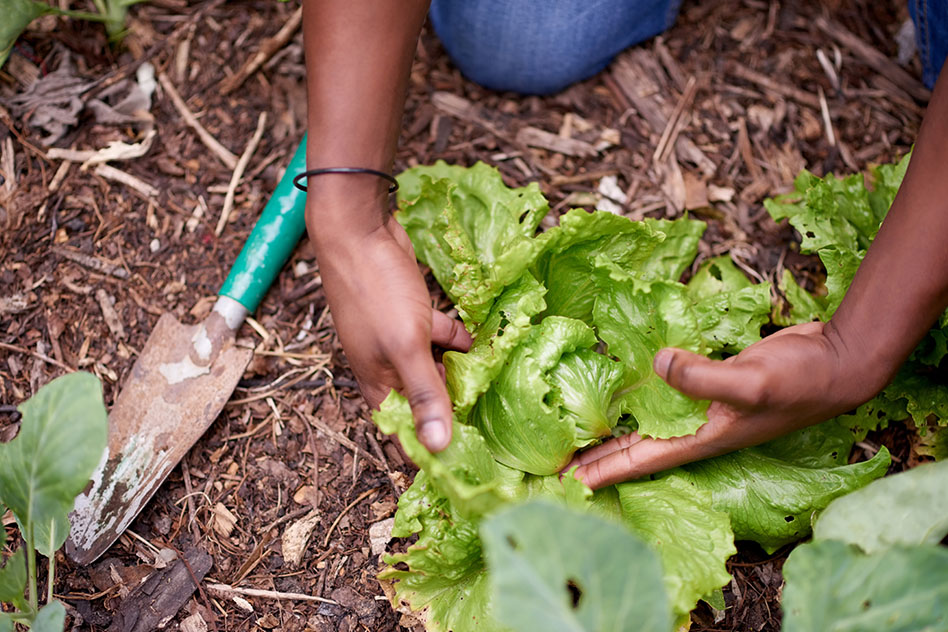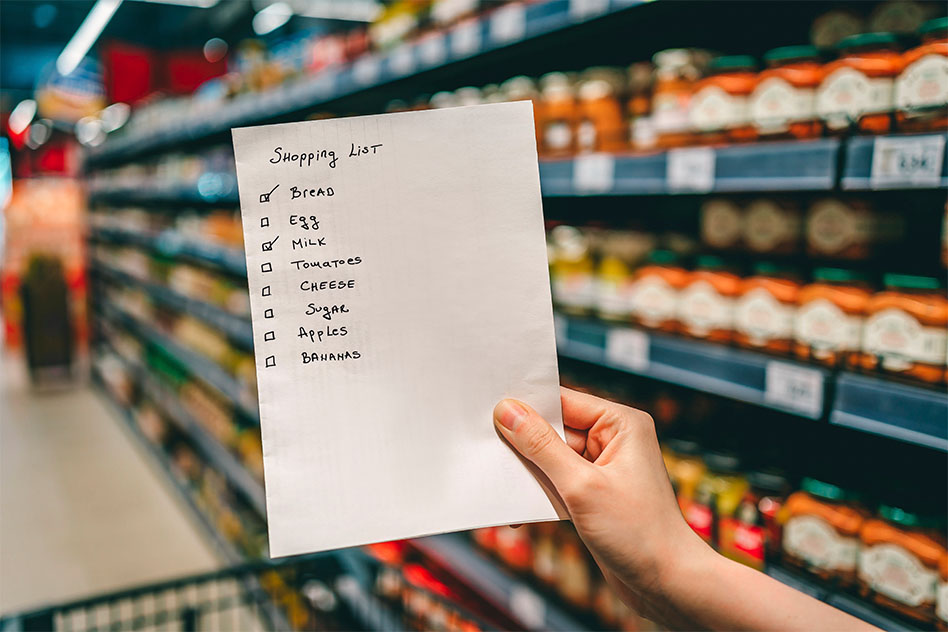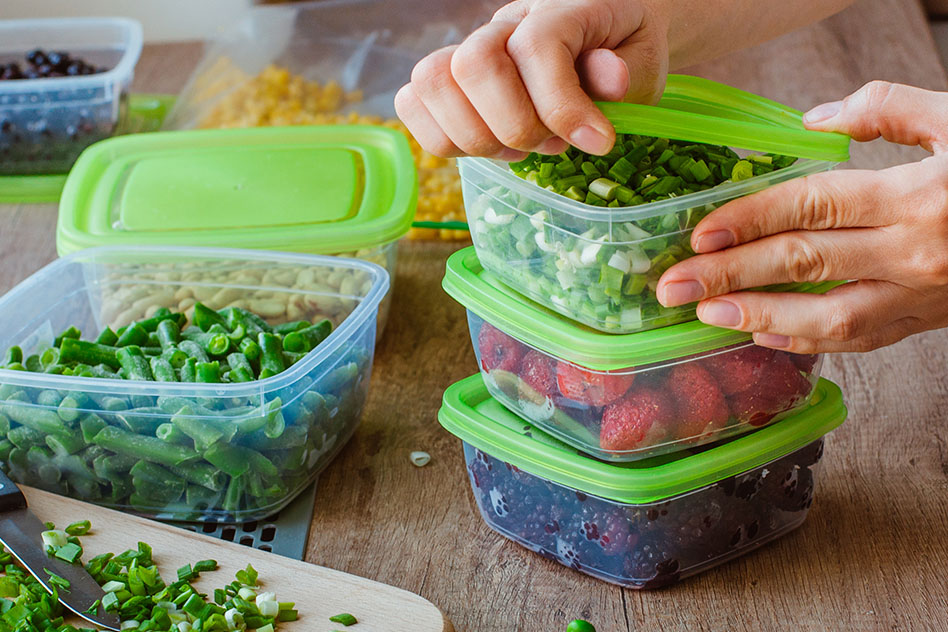
Diez consejos simples y económicos
- Home
- Live Well Blog
- Diez consejos simples y económicos
octubre 5, 2022
General / Familia
Para mantener el hábito saludable de comer frutas y vegetales todos los días, necesitas un poco de planificación y preparación, especialmente con un presupuesto limitado. Sigue estos consejos para aprovechar al máximo tu dinero.
Consejos simples para comprar frutas y vegetales según un presupuesto

Ahorra dinero comprando productos de estación y que estén en oferta
- Los productos frescos cuestan menos y saben mejor cuando se compran durante su época de cultivo.
- Planifica tu menú en torno a las frutas y los vegetales que estén en oferta. Consulta los anuncios semanales de las tiendas de alimentos antes de comprar.
- Si puedes hacerlo, compra más productos cuando estén en oferta y congela algunos para disfrutarlos más tarde.
Algunos productos son económicos durante todo el año.
Las manzanas, los plátanos, el brócoli, el repollo,
las zanahorias y la lechuga son fáciles de encontrar
durante todo el año y, por lo general, cuestan menos
de $2 por libra.
las zanahorias y la lechuga son fáciles de encontrar
durante todo el año y, por lo general, cuestan menos
de $2 por libra.


Compra frutas y vegetales congelados o enlatados
Cuando no puedas comprar frutas y vegetales frescos, compra congelados o enlatados. Pueden ser tan nutritivos como los alimentos frescos y ayudan a que cocinar sea más sencillo.
- Busca alimentos naturales: sin azúcar, sal, salsas, almíbar ni grasas añadidas.
- Escurre y enjuaga los vegetales enlatados para eliminar el exceso de sal.
- Verifica las marcas de las tiendas; por lo general, cuestan menos y tienen el mismo sabor.
- Observa las fechas de vencimiento y guarda los productos más antiguos donde puedan usarse primero.
Compra productos locales
Compra productos locales que tienen mejor sabor y para ahorrar dinero. Visita los mercados de agricultores locales, los mercados en las granjas, los centros de agricultura con apoyo de la comunidad y de alimentos: ¡esto también puede ser una actividad familiar divertida! Algunos mercados de agricultores aceptan vales de WIC y beneficios del Programa de Asistencia Nutricional Suplementaria (SNAP). Encuentra uno en https://www.usdalocalfoodportal.com/.


Cultiva tus propios productos
Incluso mejor que comprar productos locales, es cultivar tus propios alimentos. Es fácil, solamente se necesita un poco de tierra, un balcón o patio y algunas macetas. Prueba con cilantro, vegetales de hojas verdes, acelga y guisantes capuchinos. También es divertido cultivar tomates, pimientos, brócolis, frijoles y especias.
Lava y corta tus propios productos
Los productos lavados o cortados previamente pueden costar más. Elige un día para preparar los vegetales para la semana y pídeles ayuda a tus hijos. Aprenderán algunos hábitos saludables y también se divertirán ayudándote.


Nunca vayas de compras cuando tú o tus hijos tengan hambre
El hambre es tu peor enemigo cuando intentas hacer compras saludables. Puede llevarte a comprar comida que no necesitas simplemente porque se ve deliciosa. Come bocadillos pequeños, como una manzana, zanahorias o apio y mantequilla de maní, antes de ir de compras.
Haz una lista antes de ir de compras y respétala
Esto te permitirá comprar artículos más saludables y evitar alimentos que no necesitas.


No dejes que los productos se echen a perder antes de usarlos
¡No dejes que los productos se echen a perder antes de usarlos! Para ahorrar dinero, aprende a almacenar, guardar, reutilizar o congelar las frutas y los vegetales.
- Guarda los productos maduros en el refrigerador, mantén los productos verdes en la encimera y las cebollas y papas en un lugar fresco y seco. Mantén las frutas y los vegetales separados: muchas frutas liberan un gas (etileno) que acelera la maduración de algunos vegetales.
- Guárdalos en una envoltura de plástico, en bolsas de plástico o en frascos de vidrio. Los vegetales sobrantes (y algunas frutas) se pueden agregar a ensaladas, sándwiches y sopas.
- ¡Congela! Congela la fruta en trozos, como el mango, para usarlas en batidos o jugos. Otras formas de guardar frutas en el congelador son como puré en cubeteras, o enteras como un plátano pelado.
- Haz paletas heladas con frutas y yogur. Congela vegetales cocidos, como la calabaza cabellos de ángel o el calabacín, en bolsas para congelar.
¿Todavía tienes muchos vegetales?
- Acostúmbrate a limpiar el refrigerador una vez a la semana y usa los vegetales sobrantes de manera creativa. Por ejemplo, agrega pimientos cocidos o calabaza a una tortilla o en sopas, chili o guisos.
- Ten una lista de los productos que compraste para la semana en una nota adhesiva en el refrigerador y luego táchalos de la lista a medida que los vayas usando.


Otras ideas fáciles para usar tus vegetales:
- Saltea los vegetales y sírvelos con arroz integral.
- Asa o saltea los vegetales para hacer fajitas o tacos.
- Haz una pizza con los vegetales como ingredientes.
- Rellena sándwiches con lechuga, zanahorias ralladas y rodajas finas de calabacín.